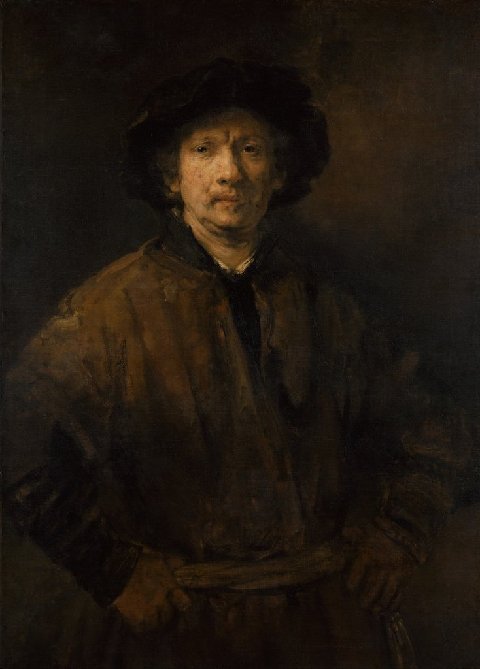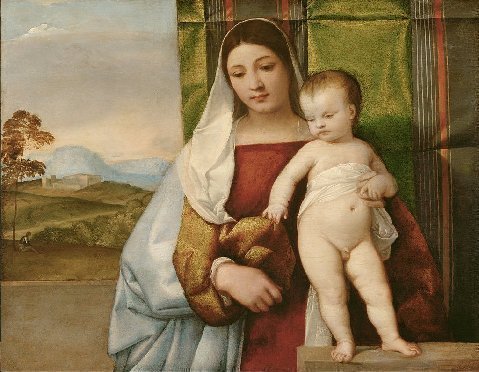Picto Diary - 14 May 2016 - Kunsthistorisches

Above: "The Peasant Wedding." Pieter Bruegel the Elder. Circa 1567. Flemish School. Kunsthistorisches Museum, Vienna, Austria. 14 May 2016.
The man in the red jacket carrying the food tray. Three feet. Bruegel toying with us?
No explanations have been found for this anomaly... only speculation.

Above: "The Art of Painting." Johannes Vermeer. 17th Century. Flemish School. Kunsthistorisches Museum, Vienna, Austria. 14 May 2016.
One of Vermeer's most famous paintings.
According to Albert Blankert, art critic, "no other painting so flawlessly integrates naturalistic technique, brightly illuminated space, and a complexly integrated composition." Note the development of the indirect light on the floor and the curtains.
The painting was acquired by Hitler from the Czernin (Austria) family for 1.82 million Reichsmark on 20 November 1940.
The painting was rescued from a salt mine near Altausee at the end of World War II in 1945, where it was preserved from Allied bombing raids. The painting was escorted to Vienna from Munich, chief of the Monuments, Fine Arts and Archives program (MFA&A) for Austria, who transported it by locking himself and the painting in a train compartment (anyone see the movie, "Monuments Men")?
The Americans presented the painting to the Austrian Government in 1946, since the Czernin family were deemed to have sold it voluntarily, without undue, force from Hitler. The painting is now the property of the Austrian Republic.

Above: "Infanta Margarita Teresa in a Blue Dress." Diego Vasquez. 1659. Kunsthistorisches Museum, Vienna, Austria. 14 May 2016.
Painting shows Margaret Theresa of Spain, age 8. The painting is part of several portraits of Margarita Theresa, in the same pose, at different stages of her life.
Margaret Theresa married her uncle, Leopold I, Holy Roman Emperor at the age of 15.
Painting is considered by many critics as best of all Diego Vasuez' work.

Above: "The Large Self-Portrait." Rembrandt. 1652. Kunsthistorisches Museum, Vienna, Austria. 14 May 2016.
"The Large Self-Portrait," oil on canvas, is one of at least 40 self-portraits painted by Rembrandt.

Above: "The Four Continents," also known as "The Four Rivers of Paradise." Peter Paul Rubens. Flemish School. Circa 1615. Kunsthistorisches Museum, Vienna, Austria. 14 May 2016.
The painting depicits the female personifications of the four continents (Europe, Asia, Africa and America) sitting with the personifications of their respective major rivers - the Danube, the Ganges, the Nile and the Rio de la Plata (our tour guide said Mississippi).
Europe is shown on the left, Africa in the middle, Asia on the right and America behind it, to the left. The tigress, protecting the cubs from the crocodile, is used as a symbol of Asia. The personification of the Danube holds a rudder. The bottom part of the painting shows several putti.
Painted during a period of truce between the Dutch Republic and Spain, the river allegories and their female companions in a lush, bountiful setting reflect the conditions that Rubens hoped would return to Antwerp after military hostilities.

Above: "The Madonna of the Rosary." Caravaggio. 1607. Florence School. Kunsthistorisches Museum, Vienna, Austria. 14 May 2016.
Intended as an altar piece, the one who commissioned the painting thought it too unconventional. Caravaggio was an artist iconoclast of his day. This painting didn't fit the convention of the times. The Madonna looks bored and is too plain. And where is the Madonna's traditional red and blue look? She is dressed in blue only. Baby Jesus looks more like a gamin than the Christ child. And, what about all those people with the tattered, dirty clothes and dirty feet below the Madonna? This is a travesty!
Trying to find a buyer, Caravaggio reworked the painting a bit. The red drape above was added. Note the two differently colored knees in the blue robe of the Madonna, showing that finding the same color of paint is difficult. The most important alteration of the painting was painting in the painting's ultimate buyer, the Flemish dressed man in the left corner of the painting.
Caravaggio was a larger than life personality. He regularly overdosed on women, girls, boys and booze. Considering the world we live in today, there is, apparently, nothing new under the sun.
Gabriel Allon, Daniel Silva's famous character in his series of novels about the Israeli spy and classical art restorer - and friend of the Pope -, would usually be restoring a Caravaggio when he wasn't hunting down a terrorist.

Above: "The Gypsy Madonna." Titian. Venetian School. 1510. Kunsthistorisches Museum, Vienna, Austria. 14 May 2016.

Above: "Madonna with the Christ child and Saint John the Baptist." 1506. Florence School. Kunsthistorisches Museum, Vienna, Austria. 14 May 2016.
This is no Caravaggio.
The Madonna looks serene, not bored. She's depicted in the traditional and accepted red and blue. And, John the Baptist and the Baby Jesus are certainly not gamins as they look lovingly towards one another.
Addendum:
Puerile.
The language will evolve in the way its majority speakers make it
evolve. "Grammatically correct" is a point in time phenomenon.
Why was the word spelled "politick" two hundred years ago?
People no longer say "zounds" or "forsooth."
Having said this, "ain't" will never be grammatically correct.
Jack Aroon,
Mahwah, NJ
Thank you. Will check with later to learn how you did this.
Doc Doug,
Orlando, FL